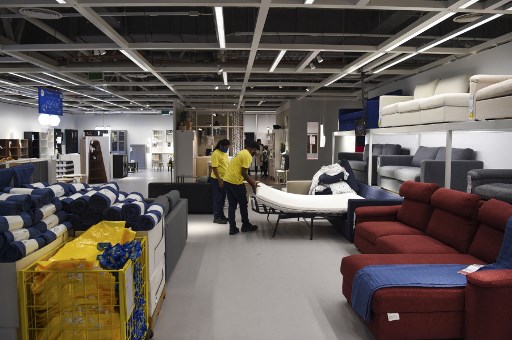Iran’s textile industry head highlights major challenges, expectations for new government
(MENAFN) In an interview with an Iranian news agency on Sunday, Mojataba Dastmalchian, the head of the Association of Iran Textile Industries, outlined several key expectations and concerns for Iran’s textile industry from the new government. According to Dastmalchian, the sector faces significant challenges, including unauthorized garment imports, insufficient funding for production units, and outdated machinery that requires modernization.
Dastmalchian emphasized that despite existing laws designed to prevent the importation of goods that have domestic counterparts, many textiles and clothing items continue to enter Iran through both official channels and smuggling. This influx has placed considerable pressure on the domestic industry, impeding its growth and development. He called on the new government to enforce the import ban more rigorously to protect and boost the local textile industry.
Another major issue highlighted by Dastmalchian is the age of the industry’s machinery. The long lifespan of textile machines necessitates their restoration and modernization. However, he noted that there are challenges in placing orders for new machinery, and he urged the government to address these concerns to facilitate the upgrading process.
In terms of international trade, Iran exported approximately USD500 million worth of textile products in the previous Iranian calendar year, which spans from March 21, 2023, to March 19, 2024. The primary destinations for these exports were Iraq, Afghanistan, and Russia, which respectively accounted for 26 percent, 18 percent, and 6 percent of Iran’s total textile exports. Most of these products were shipped through the Kashan Customs Office, followed by the Mashhad and West Tehran customs offices.
On the import side, Iran brought in USD2.2 billion worth of textile products during the same period, marking a 12 percent increase compared to the previous year. This increase in imports underscores the ongoing demand for textiles and highlights the need for domestic production to be more competitive.
Dastmalchian emphasized that despite existing laws designed to prevent the importation of goods that have domestic counterparts, many textiles and clothing items continue to enter Iran through both official channels and smuggling. This influx has placed considerable pressure on the domestic industry, impeding its growth and development. He called on the new government to enforce the import ban more rigorously to protect and boost the local textile industry.
Another major issue highlighted by Dastmalchian is the age of the industry’s machinery. The long lifespan of textile machines necessitates their restoration and modernization. However, he noted that there are challenges in placing orders for new machinery, and he urged the government to address these concerns to facilitate the upgrading process.
In terms of international trade, Iran exported approximately USD500 million worth of textile products in the previous Iranian calendar year, which spans from March 21, 2023, to March 19, 2024. The primary destinations for these exports were Iraq, Afghanistan, and Russia, which respectively accounted for 26 percent, 18 percent, and 6 percent of Iran’s total textile exports. Most of these products were shipped through the Kashan Customs Office, followed by the Mashhad and West Tehran customs offices.
On the import side, Iran brought in USD2.2 billion worth of textile products during the same period, marking a 12 percent increase compared to the previous year. This increase in imports underscores the ongoing demand for textiles and highlights the need for domestic production to be more competitive.

Legal Disclaimer:
MENAFN provides the
information “as is” without warranty of any kind. We do not accept
any responsibility or liability for the accuracy, content, images,
videos, licenses, completeness, legality, or reliability of the information
contained in this article. If you have any complaints or copyright
issues related to this article, kindly contact the provider above.
Most popular stories
Market Research

- Poppy Seed Market Size, Share, In-Depth Insights, Opportunity And Forecast 2025-2033
- Daytrading Publishes New Study On The Dangers Of AI Tools Used By Traders
- Origin Summit Debuts In Seoul During KBW As Flagship Gathering On IP, AI, And The Next Era Of Blockchain-Enabled Real-World Assets
- Chicago Clearing Corporation And Taxtec Announce Strategic Partnership
- Bitmex And Tradingview Announce Trading Campaign, Offering 100,000 USDT In Rewards And More
- ROVR Releases Open Dataset To Power The Future Of Spatial AI, Robotics, And Autonomous Systems






















Comments
No comment